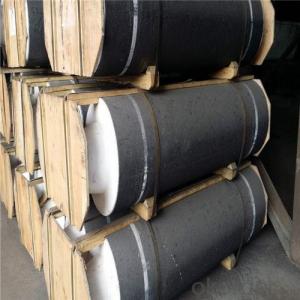When we talk about the cost-effectiveness of carbon graphite electrodes, we’re diving into a world of efficiency, performance, and, dare I say, a bit of financial savvy. You see, these little marvels of engineering are not just about getting the job done; they’re about doing it in a way that doesn’t break the bank. And who doesn’t love a good deal, right?
Let’s start with the basics. Carbon graphite electrodes are the unsung heroes of many industrial processes. They’re versatile, reliable, and can handle a variety of tasks, from welding to electroplating. But what really sets them apart is their cost-effectiveness. They’re like the reliable friend who’s always there for you, without draining your wallet.
Now, you might be wondering, what makes them so cost-effective? Well, it’s all about their longevity. These electrodes have a longer lifespan compared to other materials, which means you’re not constantly replacing them. Think of it as investing in a good pair of shoes; they might cost a bit more upfront, but they’ll last you a long time, saving you money in the long run.
But it’s not just about the initial cost. Carbon graphite electrodes also reduce operational costs. They require less power to operate, which translates to lower energy bills. Plus, their resistance to corrosion means less maintenance and fewer replacement parts needed. It’s like having a car that doesn’t need oil changes every few weeks; it just keeps on running smoothly.
And let’s not forget the environmental benefits. Carbon graphite electrodes are more environmentally friendly than their counterparts. They produce less waste and have a smaller carbon footprint. So, not only are you saving money, but you’re also doing your part for the planet. It’s a win-win situation if I’ve ever seen one.
But, as with any investment, there are considerations to keep in mind. The upfront cost of carbon graphite electrodes can be higher than other materials. It’s like buying a high-quality appliance; you pay more now, but you get better performance and a longer lifespan. It’s all about weighing the short-term costs against the long-term benefits.
Another factor to consider is the application. Not every process is suited for carbon graphite electrodes. It’s important to do your research and understand the specific needs of your industry to ensure you’re making the right choice.
So, how do you determine if carbon graphite electrodes are the right fit for your operation? Here are a few things to consider:
1. **Longevity**: How long do you expect the electrodes to last? If you’re looking for a long-term solution, carbon graphite might be the way to go.
2. **Operational Costs**: What are your current energy and maintenance costs? If you’re looking to cut down on these expenses, carbon graphite electrodes could be a game-changer.
3. **Environmental Impact**: Is sustainability a priority for your business? If so, the eco-friendly nature of carbon graphite electrodes might be a significant selling point.
4. **Initial Investment**: Are you willing to pay a bit more upfront for a product that will save you money in the long run? It’s a question of short-term versus long-term gains.
5. **Industry Requirements**: What are the specific needs of your industry? Make sure the benefits of carbon graphite electrodes align with these requirements.
In conclusion, the cost-effectiveness of carbon graphite electrodes is not just about the money saved. It’s about the value they bring to your operation. They offer a balance of performance, durability, and environmental responsibility that can’t be ignored. So, the next time you’re in the market for electrodes, give carbon graphite a serious look. You might just find that they’re the perfect fit for your business.

